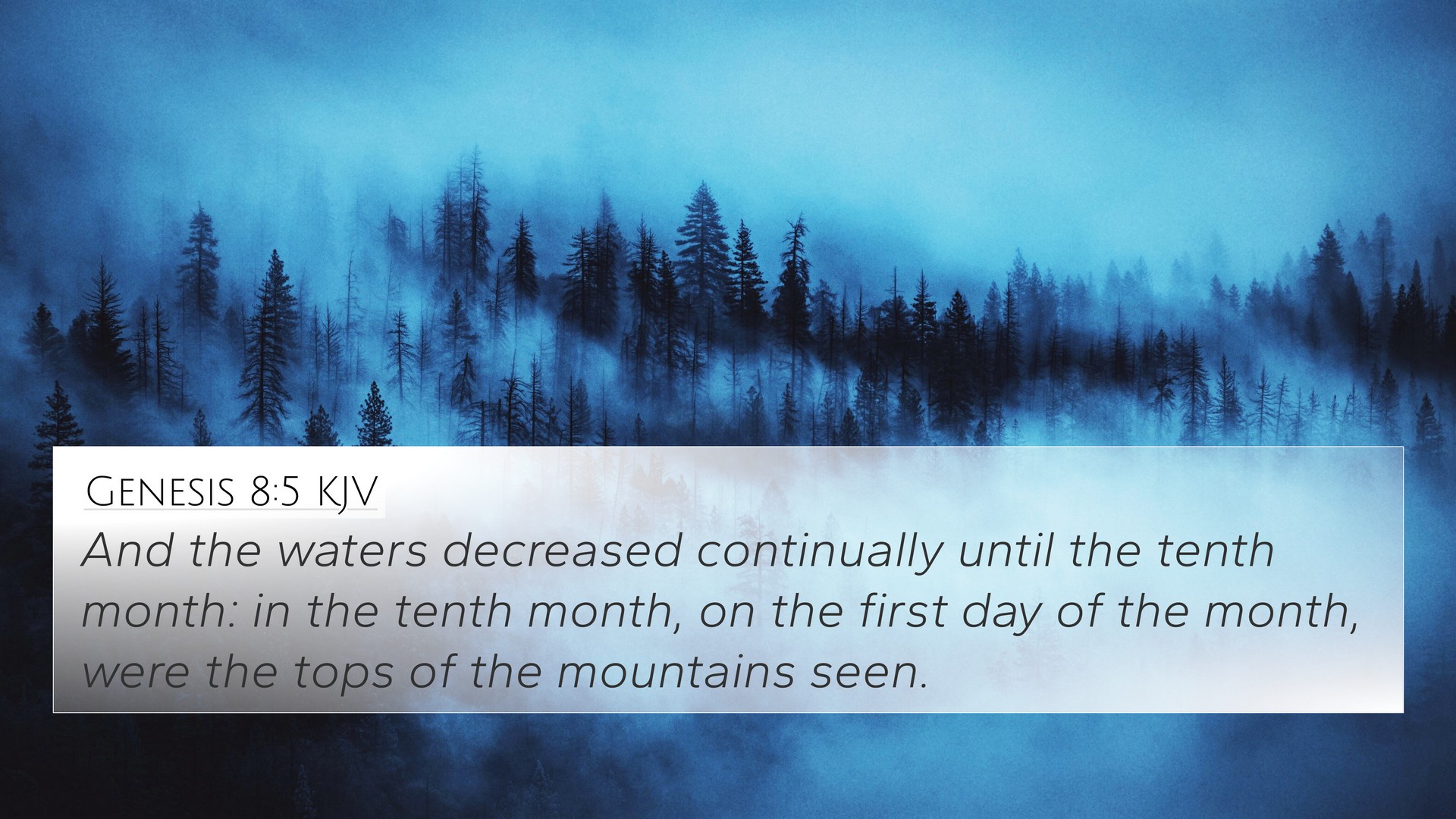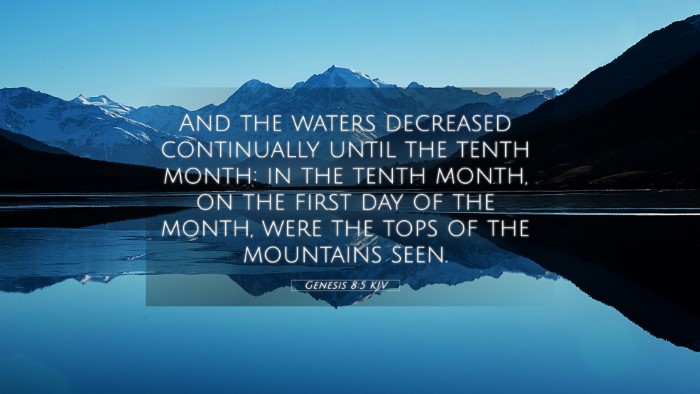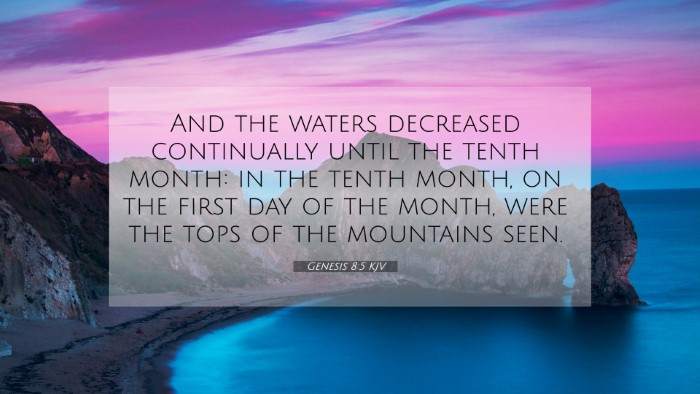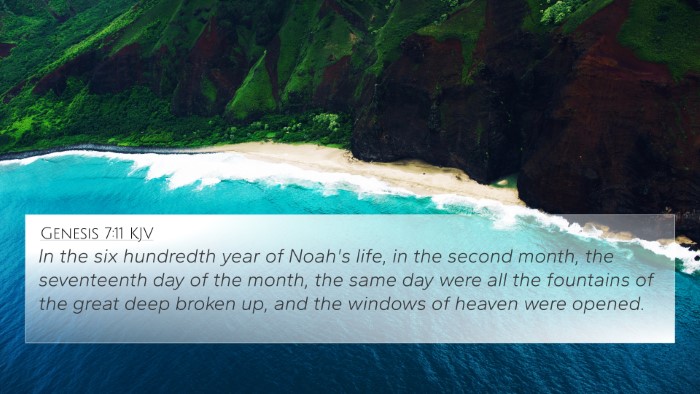Understanding Genesis 8:5
Genesis 8:5 states, "And the waters returned from off the earth continually: and after the end of the hundred and fifty days the waters were abated." This verse occurs at a crucial moment in the biblical narrative following the flood, marking significant physical and theological implications.
Summary of Genesis 8:5
In this verse, the gradual reduction of the waters post-flood is described. After 150 days, the floodwaters began to recede, symbolizing both a literal drying of the land and a shift in God's relationship with creation.
Thematic Connections
- God’s Sovereignty: The retreat of the waters showcases God's control over nature and His fulfillment of promises.
- Human Deliverance: The reduction of the floodwaters brings hope to Noah and the passengers of the ark, emphasizing themes of salvation.
- Renewal and Restoration: The receding waters herald the beginning of a renewed earth, cleansing from sin and judgment.
Comparative Bible Verse Analysis
This verse can be understood through cross-references with several other Bible verses:
- Genesis 7:24: Establishes the duration of the flood, emphasizing the context of this verse.
- Genesis 8:2: Discusses the wind that God used to cause the waters to begin receding.
- Isaiah 54:9: God promises never to flood the earth again, reflecting on His covenant with Noah.
- Psalm 104:9: Speaks of God’s control over waters and the boundaries He sets for them.
- 2 Peter 3:6: References the flood as an act of divine judgment, paralleling events of creation and destruction.
- Matthew 24:37-39: Jesus uses the flood as a lesson on the coming judgment, establishing a link between events and their theological implications.
- Hebrews 11:7: Highlights Noah's faithfulness and obedience, which resonates with the theme of divine salvation.
- Romans 8:22: Discusses creation's groaning for restoration, paralleling the retreating waters as part of that process.
Cross-Referencing Biblical Texts
Tools for Bible cross-referencing can greatly enhance the study of Genesis 8:5. Notable resources include:
- Bible concordance to find related scripture.
- Bible cross-reference guide for thematic studies.
- Bible chain references that connect related verses.
- Comprehensive Bible cross-reference materials for deeper understanding.
Applications for Study
For those interested in how to use Bible cross-references effectively, consider:
- Identifying connections between Old and New Testament passages.
- Learning how to find cross-references easily using tools like Strong’s Concordance.
- Engaging in detailed cross-reference studies between Gospels for a richer context.
- Exploring comparative studies of Pauline epistles related to themes of salvation and judgment.
Conclusion
Genesis 8:5 serves as a pivotal verse in understanding both the physical and spiritual aftermath of the flood. Through careful examination and cross-referencing, one can explore the rich tapestry of themes pertaining to God’s sovereignty, renewal, and the hopeful restoration of creation.



